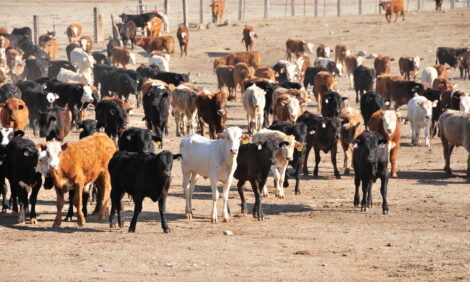



Improving Cattle Health Could Decrease Greenhouse Gas Emissions
UK - Efforts to reduce cattle greenhouse gas emissions by improved animal health could be undermined by increased herd size, according to research presented at the British Society for Animal Science conference.John Elliott, from ADAS, and his colleagues used datasets on cattle numbers, productivity and disease prevalence together with expert veterinary opinions and economic analysis to generate models of the impact of greater disease control.
The project was based on the idea that some measures to treat or prevent disease and hence maximise productivity are not picked up by farmers.
The researchers focussed on 10 key diseases in the UK cattle population, such as mastitis, Bovine Viral Diarrhoea (BVD)and Johne's disease.
Vets put forward a set of 30 mitigation measures for these diseases, including vaccination, veterinary visits and grazing management.
The researchers then modelled how greenhouse gas emissions, productivity and profitability would be affected by using these mitigation measures.
The model looked at scenarios of animals being either 20 per cent or 50 per cent healthy, in comparison with having a completely healthy animal.
It showed that there were opportunities for greenhouse gas emissions reduction through improved animal health for all 10 diseases, even when the environmental cost of producing the treatments were taken into account.
Johne's disease had the biggest opportunity for greenhouse gas abatement, whilst results for mastitis showed lower benefits of improved animal health.
However, economic analysis showed that prices would drop due to increased productivity, and herd size of the country would increase.
In the dairy sector, milk production was expected to increase by 4.7 per cent and milk price to fall by 0.4 per cent under an optimistic scenario.
However, despite an overall increase in emissions from increased cattle numbers, the emissions per animal, or intensity, would be reduced in the dairy sector by three per cent.
Mr Elliott said that the research provided important information for policy makers on the potential for reducing emissions, as livestock farming is responsible for about three per cent of total UK greenhouse gases.
However, he emphasised that the model had various limitations, including uncertainties about land use change and disease prevalence in the future, as well as the fact that diseases sometimes occur in tandem and some treatments can benefit several diseases.
Read other news items on livestock emissions research here:



